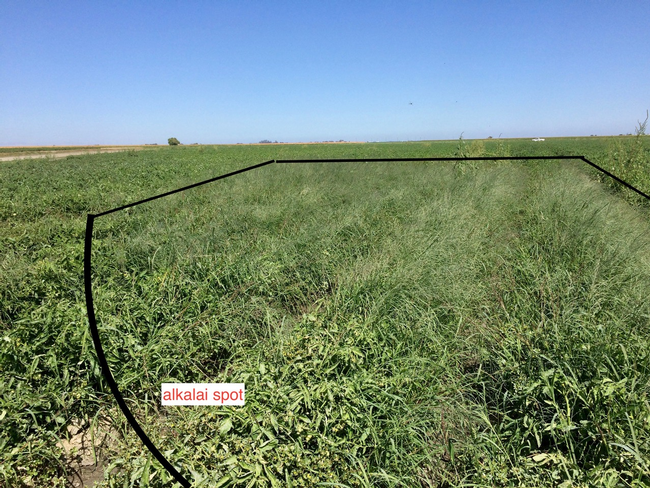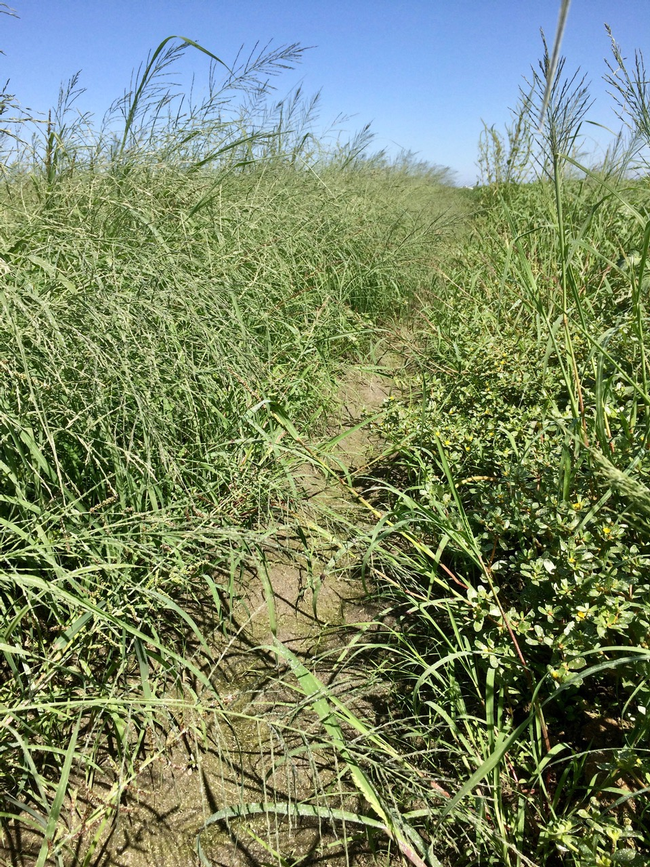Last summer, I transplanted a tomato variety trial into a field not far from Dos Palos, an area where annual crops such as cotton, corn, tomatoes, and melons have historically dominated the agricultural landscape. The soils in this area typically are clay loams with elevated pH (> 7) as well as salinity (EC > 2). In particular, the soil at this specific location was classified as an Alros clay loam with a pH of 8 and an EC of 3.2. And this was the good part of the field!
The trial was long enough that it extended across the entire length of the field. At the south end, it terminated in an obvious alkali spot: the soil was much lighter, and the structure was that of powdered chalk. I briefly considered moving the remaining plots to a better part of the field, but I didn't want to stop the entire transplanting operation for just a few more plots.
This field used typical weed management practices for fresh market tomatoes: dual magnum (S-metoachlor pre-plant incorporated) followed by mechanical cultivation (2x) and one pass by a hand hoeing crew. The field was furrow irrigated using canal water. Fresh market tomato growers frequently use furrow irrigation, as it tends to concentrate the fruit set as compared to drip.
My trial was mostly weed free, except for the portion that ended up in the alkali spot (Figure 1). Here, it was completely grown over by weeds by season end, especially barnyard grass, watergrass, junglerice (Echinochloa spp), sprangletop (Leptochloa spp), and purslane (Portulaca spp).

At this same area where the weeds proliferated, the soil was saturated and so slick that walking through the furrow was practically impossible. White alkali spots like this often have poor infiltration as a result of sodium salts, and indeed at this spot the SAR, or sodium absorption ratio, was 10, which indicates high sodium content. Sodium salts cause clay particles to expand and seal over. They make slick clay soils even greasier, and deflocculate structure. The combination of furrow irrigation and poor water infiltration made the soil in this area chronically wet all season. The result: a proliferation of weeds especially adapted to these growing conditions (Figure 2).

The tomatoes did not yield well here, with no production in some plots. While tomatoes are more salt tolerant than many crops, they have their limits. Weed competition further reduced yield. But in this situation the lack of weed control was not herbicide or applicator failure, rather, it was a specific inherent soil problem of high pH coupled with excessive sodium salts.